Customer success isn’t just about helping customers when things go wrong. It’s about ensuring they get the most out of what you offer and become real brand advocates.
When customers win, you win. That’s why building a strong customer success process is so important — understanding your customers, building great relationships, and being there for them at every step.
Everyone benefits when you focus on your customers’ goals and find ways to help them succeed. Let’s see how.
Where Do You Rank on the AI Maturity Curve?
Take the 5-minute assessment and get a personalized score and recommended next steps.
What Is Customer Success?
A customer success process is a proactive approach that helps customers achieve their goals with a product or service. It focuses on delivering value, reducing churn, and building long-term relationships through structured engagement.
Unlike customer support, which is reactive, customer success is proactive and focuses on prevention rather than cure. Also, unlike a customer lifecycle covering all aspects of a customer journey, customer success is narrowly focused on retention and advocacy.
Stages of the customer success process
- Account onboarding: Guide new customers with tailored onboarding plans, product walkthroughs, and personalized setup to speed up value delivery.
- Training: Offer ongoing resources such as tutorials, documentation, and live sessions to improve product usage and confidence.
- Customer engagement: Maintain regular touchpoints to identify issues early, provide insights, and reinforce the product’s impact.
- Value realization: Help customers connect product features to their specific goals by measuring outcomes and adjusting strategies as needed.
- Quarterly Business Reviews (QBRs): Conduct recurring check-ins to review progress, align on objectives, and plan for future success.
- Churn prevention: Spot early warning signs, understand customer challenges, and provide targeted support to retain accounts.
- Support collaboration: Work closely with support to ensure fast resolution of issues and a consistent customer experience.
- Tracking success metrics: Monitor usage data, satisfaction scores, retention rates, and revenue impact to refine the strategy.
- Feedback loops: Collect and act on customer feedback to enhance the product and improve the overall experience.
Here’s a more granular overview of a customer success process:

Why Do You Need a Customer Success Process?
A customer success plan is essential for building long-term, profitable customer relationships. It ensures your customers achieve their goals while driving growth for your business.
Here’s why:
- Improved customer satisfaction: Proactive support and personalized attention lead to happier customers.
- Increased customer retention: By addressing customer needs and preventing churn, businesses can retain customers for longer.
- Higher customer lifetime value (CLTV): Upselling, cross-selling, and customer expansion drive increased revenue.
- Stronger customer advocacy: Delighted customers become brand ambassadors, leading to referrals and positive word-of-mouth.
- Optimized resource allocation: Data-driven insights help prioritize efforts and maximize team efficiency.
- Scalability: A defined customer success process can be adapted to support business growth.
Customer success is a forward-looking strategy that ensures both the customer and the business grow together.
How to Build a Customer Success Process
Creating a customer success process flow requires careful planning and execution. Here’s how you can get started.
1. Define your goals and customers
Understanding your customers’ definition of success is paramount. Identify the desired outcomes they hope to achieve through your product or service.
If you’re a marketing automation platform like HubSpot, customer success might mean generating more qualified leads, increasing conversion rates, or improving campaign ROI.
Also, align your customers’ goals with your company’s objectives. For example, if revenue growth is a priority, customer success strategies might focus on upselling or cross-selling opportunities.
To measure progress effectively, select key metrics that accurately reflect both customer satisfaction and business performance.
For a SaaS company, metrics like customer satisfaction (CSAT), net promoter score (NPS), customer lifetime value (CLTV), feature adoption rate, and churn rate can provide valuable insights into customer sentiment, product usage, and business health.
Don’t forget to segment your customers. Segmenting your customer base based on factors like industry, company size, or purchasing behavior enables a more tailored approach to customer success. A CRM platform can easily segment customers by company size (small business, enterprise), industry (tech, healthcare), or use case (sales, marketing).
Recognizing the distinct needs of different customer segments allows for focused strategies and improved customer satisfaction.
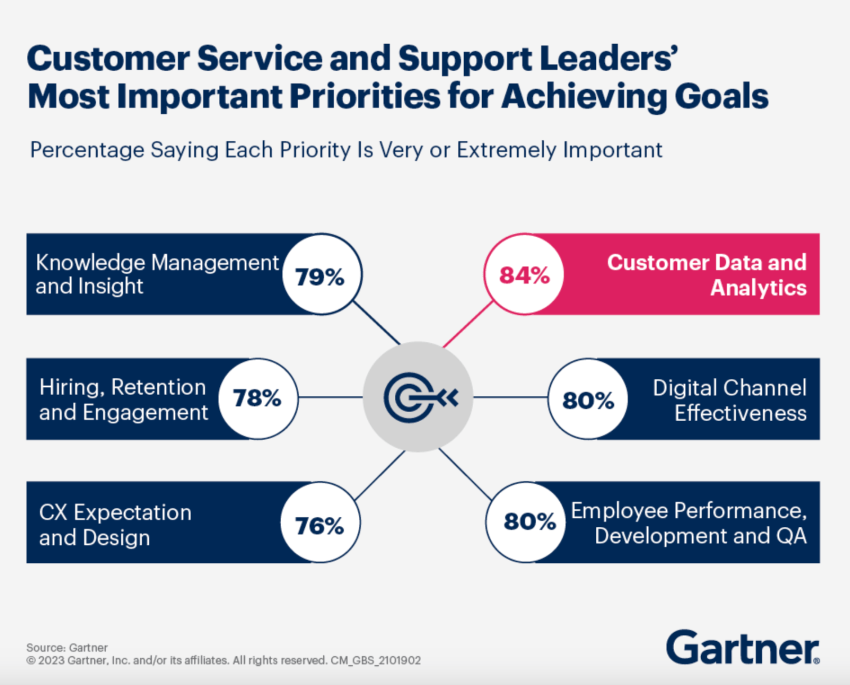
2. Map the customer journey and build your team
Visualize the customer’s experience from initial awareness to long-term advocacy. Identifying key touchpoints, pain points, and moments of truth enables you to pinpoint areas where the customer success team can optimize the customer experience and mitigate potential challenges.
To effectively support customers throughout their journey, assemble a customer success team with diverse skill sets. Let’s explore different team structures and when to use each:
- Dedicated Customer Success Managers (CSMs):
- Each customer is assigned a specific CSM
- Example: Used by enterprise SaaS companies and sales teams like Salesforce for their largest accounts.
- Pooled CSMs:
- A team of CSMs collectively manages a group of customers
- Example: Suitable for mid-market companies like Hubspot with a large customer base.
- Segmented CSMs:
- CSMs specialize in specific industries or product lines
- Example: Used by companies like Adobe with diverse product offerings (Creative Cloud, Document Cloud).
- Tiered Customer Success and Account Management:
- Different levels of customer support based on customer value or needs
- Example: Used by cloud storage providers like Dropbox to offer varying levels of support based on subscription tiers.
When building your team, prioritize individuals with strong interpersonal and problem-solving abilities, coupled with empathy and in-depth product knowledge. The capacity to build rapport and effective communication are fundamental for building trust and long-term customer relationships.
3. Use technology and create playbooks
Invest in customer success platforms equipped with functionalities such as customer health scoring, case management, knowledge bases, and analytics. These proactively identify at-risk customers, streamline support processes, and extract valuable customer insights.
Customer service tools like Nextiva come packed with automation and intelligent AI features to automate the gruntwork and free up your team to focus on value-adding tasks.
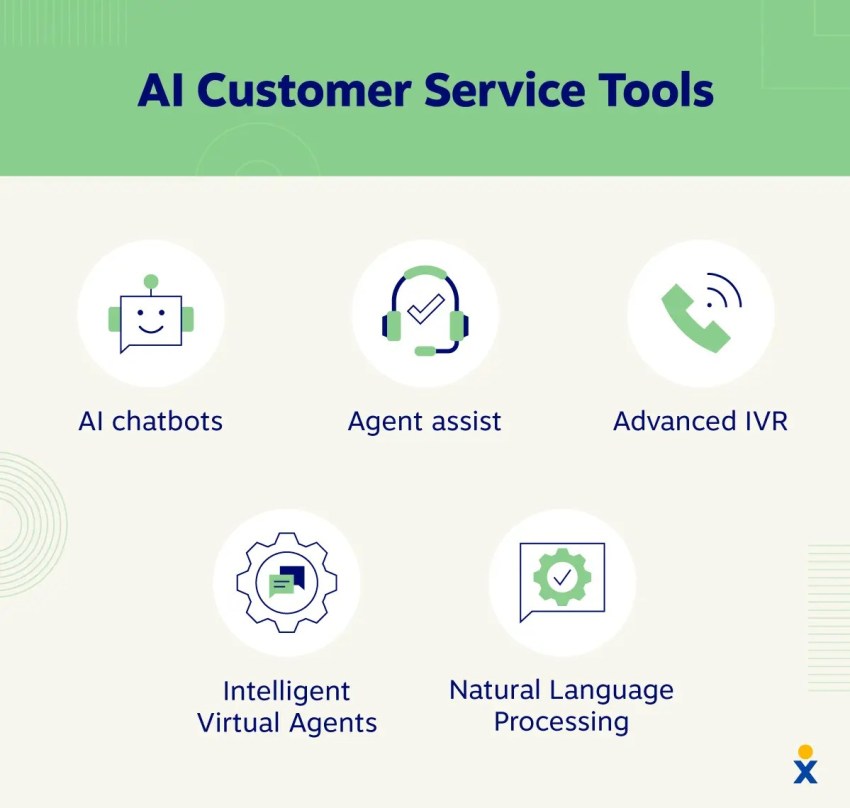
Data-driven decision-making is also essential. Use customer analytics to better understand customer behavior, product usage patterns, and customer satisfaction. These insights help optimize customer success strategies and effectively allocate business resources.
To standardize processes, develop comprehensive playbooks outlining procedures for common customer interactions, such as onboarding, renewals, and troubleshooting. Playbooks empower the customer success team with best practices and ensure a consistent customer experience.
4. Implement, monitor, and improve
Communicate the new process to your team. Provide thorough training to ensure everyone understands and adopts your processes.
Next, establish key performance indicators (KPIs) to measure the effectiveness of your efforts. These metrics will help you track progress toward your customer success goals.
Improvement is an ongoing process. Regularly review your customer success metrics to identify trends and areas that need enhancement.
Collect feedback from both customers and employees — they often have valuable insights into what’s working well and what could be better. Use this information to make informed adjustments to your strategy.
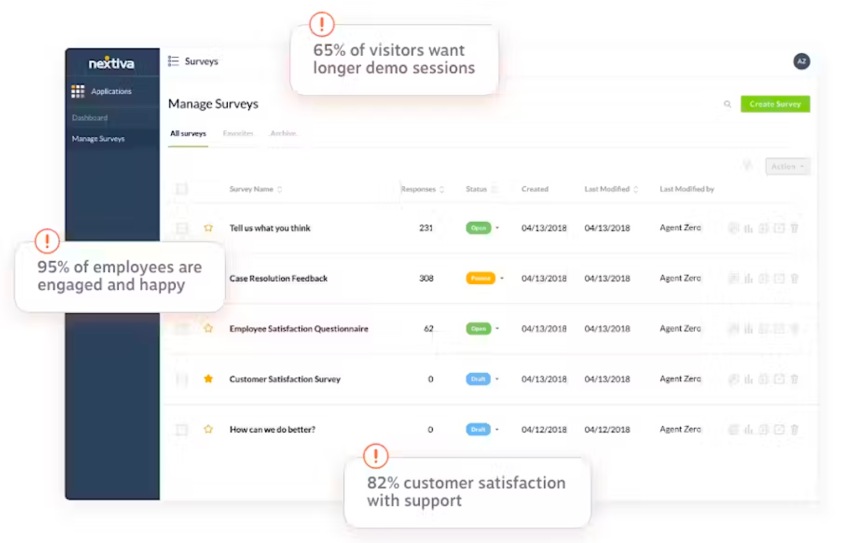
5. Build a strong company culture
Add company culture to the mix.
Zappos, an American online shoe and clothing retailer, is a great example to learn from. They’ve made customer happiness a core value of their organization. They invest significantly in employee training and allow their customer success representatives to go above and beyond in resolving issues.
Incorporate a customer-first mindset into your company culture to see similar benefits. Your employees will be more engaged, and customers will appreciate the extra effort.
Customer needs and market conditions change over time, so be prepared to adapt your strategy as necessary. Stay responsive to the changes and keep your customer success efforts effective and relevant.

How to Measure Your Customer Success Performance
Measuring customer success helps gauge customer loyalty, satisfaction, and the likelihood that they recommend your product or service, so you can make improvements and grow your business. Let’s start with the key metrics you need to track.
Key customer success metrics
To measure customer success, you’ll want to keep an eye on these key metrics:
- Net Promoter Score (NPS): How likely customers are to recommend your business to others. A low NPS score often correlates with higher churn rates.
- Customer Satisfaction (CSAT): How happy customers are with a specific interaction. High CSAT scores often correlate with increased customer loyalty and positive word-of-mouth referrals
- Customer Effort Score (CES): How easy it is for customers to do business with you.
- Customer Health Score: The overall score of how well your customers are doing with your product or service.
- Customer Lifetime Value (CLTV): Predicts how much money a customer will spend with your business over time. Increasing CLTV often leads to improved profitability and sustainable growth.
- Customer Churn Rate: The percentage of customers who stop doing business with you. Reducing churn directly impacts revenue stability and growth potential.
- Customer Retention Rate: The percentage of customers who continue doing business with you.
- Product Adoption Rate: How quickly customers start using new features or products. Higher adoption rates typically lead to increased customer retention and expansion opportunities.
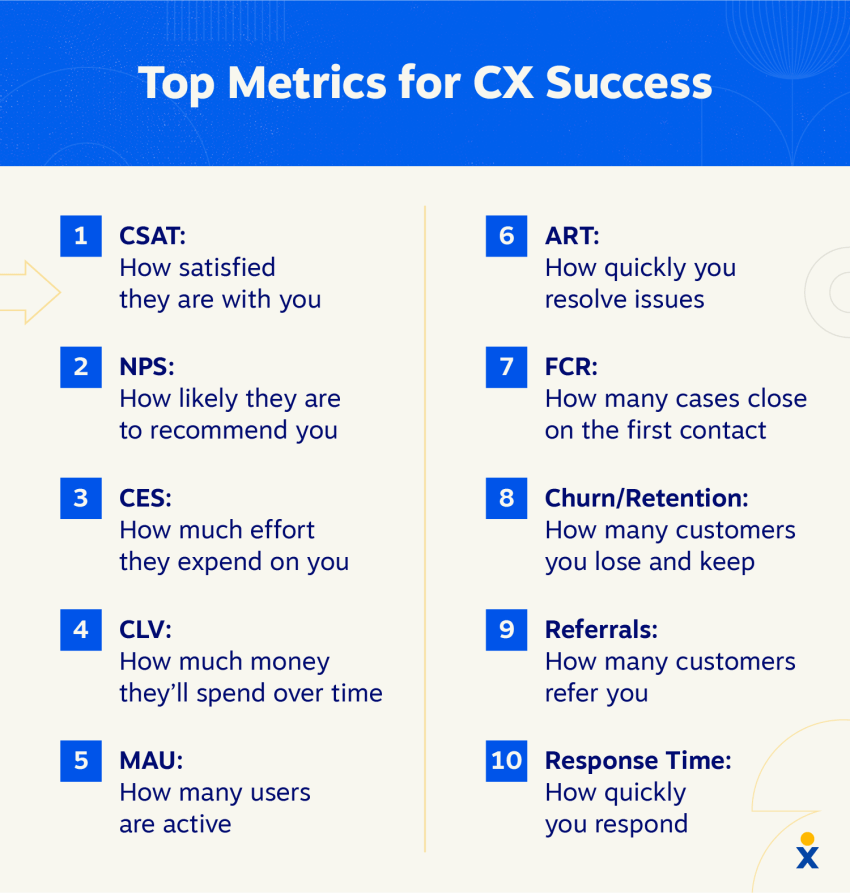
To really understand your customers, start by asking them what they think. Send out surveys, chat with them directly, or just ask for feedback. Then, keep a close eye on those numbers we talked about earlier — NPS, CSAT, and the rest.
Figure out what makes your customers tick. Divide them into groups based on what they need and how they act. Decide what it means to create successful customers who’re delighted with your product.
Look for customer success tools that can help you keep track of all this information and find patterns.
Once you have a good picture of your customers, use what you learn to make things better. Improve your products, how you treat customers, and their experience.
It’s important to see the big picture too. Figure out how your customer’s journey goes from start to finish. Make sure your support team is fast and helpful. And always look for ways to improve your product based on how people use it.
Customer success isn’t a one-and-done deal. Keep checking those numbers and making adjustments as you go. The goal is to keep your customers happy and coming back for more.
Building a Customer Success Strategy
Take your customer success process and weave it into your entire business approach. Here’s how to club a customer success process with your larger strategy:
📝 Develop a robust customer onboarding process
Onboarding is your customer’s first experience of your product or service, so it’s crucial to make it count. A smooth onboarding process sets the tone for the entire customer relationship. It’s not just about showing them how to use your product but helping them see the value right from the start.
Consider creating a personalized onboarding plan for each customer, based on their specific needs and goals. This might include one-on-one sessions, video tutorials, or interactive guides. The key is to make the process as frictionless as possible, so customers can start seeing results quickly.
Here’s an example of a quick video from Nextiva for its customers to quickly overview the platform.

📚 Educate customers
This goes beyond just onboarding. It’s an ongoing process that helps customers continue to get value from your product over time. This could involve creating a knowledge base, hosting regular webinars, or sending out tip-filled newsletters. The goal is to empower your customers to become product experts in their own right.
Also, reach out to customers where they prefer (via call, social media, email, or messaging)
Think about creating different educational tracks for different types of users or use cases. Some customers might want deep dives into advanced features, while others might prefer quick tips and tricks. Offer a variety of educational resources to cater to different learning styles and needs.
🤝 Nurture customer relationships
This is where the “success” in customer success first appears. Regular, personalized communication goes beyond solving problems. Understanding your customers’ evolving needs and goals and showing them how your product can help them achieve those goals.
Conduct regular check-ins, send relevant industry insights, and celebrate their milestones with them. The key is to make each customer feel valued and understood. Businesses aren’t just competing on product features — they’re competing on customer relationships.
☎️ Offer excellent customer support
Support is the safety net of your customer success strategy. When issues arise (and they will), your customer success team needs to be ready to swoop in with timely and effective solutions. Great support turns potentially negative experiences into positive ones.
Consider implementing a tiered support system, where more complex issues can be escalated to specialized CS team members via support tickets. Also, think about proactive support like reaching out to customers when you notice they haven’t been using certain features, or when you’ve released updates that might affect their workflow.
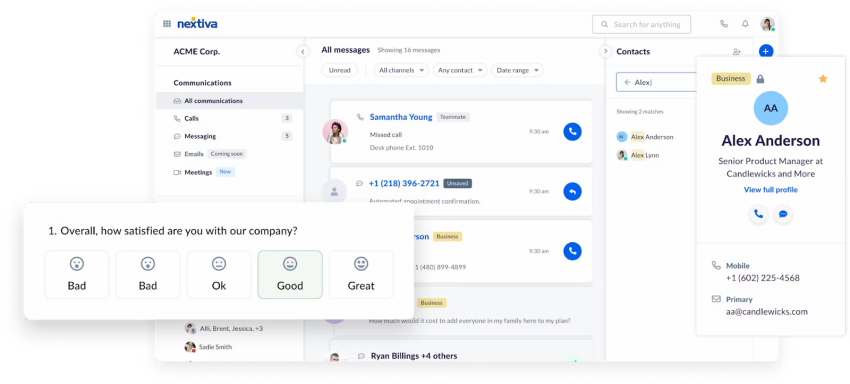
❌ Prevent customer churn
You need to stay one step ahead of potential issues that cause a customer to leave (or churn). Use data and analytics to identify warning signs like decreased product usage, low customer engagement with your communications, or poor satisfaction scores.
Once you’ve identified at-risk customers, have a plan in place to re-engage them. Reach out with personalized offers, provide additional training, or adjust their service plan to better meet their needs. Retaining existing customers is any day less hectic than acquiring new customers and saves on customer acquisition costs.
Integrating these elements into your customer success strategy will help you to create a comprehensive customer success process that supports customers at every stage of their journey with your product.
👥Improve Collaboration Between Your Customer Success and Support Teams
The role of teamwork in achieving customer success is often undermined in SaaS organisations. Cultivating a customer-centric culture across teams and promoting a healthy, collaborative environment will significantly level up your customer success strategy.
Build a tight ship from start to finish by defining your goals and strategies, creating playbooks to standardize processes, and tying everything together with a solid team structure.
Team building isn’t a one-off deal. Continuously reinforce a unified vision through various communication channels, such as all-hands meetings and newsletters. Also, conduct regular performance reviews to see the team’s impact on customer strategies and consistently drive improvement.
⏳Prioritize and Sequence Processes
You’ll spread yourself thin trying to address everything at once. Focus on moving the needle by solving your customers’ most pressing needs one at a time.
Here’s how:
- Identify customer pain points: Use surveys and analytics to find touchpoints where customers drop off and experience delays or frustrations.
- Evaluate Impact and Urgency: Sometimes, it all comes down to a judgment call. Focus on what delivers the most value to customers, carries the highest risk, or can be addressed quickly.
- Pay Attention to Team Signals: Identifying where customer success managers encounter friction can help you identify opportunities to optimize processes and team structures. It could be renewal conversations, upsell opportunities, or complex product features.
Customer Success Strategies for SaaS Companies
Why SaaS Success Depends on CX More Than Ever
Here’s the thing about SaaS. Your customers can leave at any time. No long contracts or complicated migrations to slow them down. If they’re not getting value from your product, they’ll find something else that does the job better.
That’s exactly why customer success has become so critical. It’s not just about keeping people happy anymore; it’s about making sure they actually succeed with your product. And the numbers back this up: 79% of business leaders now consider customer experience a revenue driver, not a cost center.
What Is Customer Success in SaaS?
Think of customer success as your growth team in disguise. While traditional support waits for problems to surface, customer success gets ahead of issues and looks for ways to help customers get more value from what they’re already paying for.
The goal? Increase customer lifetime value, boost retention rates, and turn users into advocates who actually want to recommend your product. But here’s where it gets interesting: 92% of companies are adopting AI in CX, but only 9% have achieved mature implementations. Most teams are still figuring out how to do this at scale without it feeling robotic.
Six Proven SaaS Customer Success Strategies
1. Personalized Onboarding and Automation
Start by figuring out what different customer segments actually need. A startup using your CRM has different goals than an enterprise team. Create onboarding paths that make sense for each group, then use automation to handle the routine stuff — welcome emails, tutorial sequences, milestone celebrations — while your team focuses on the strategic conversations.
2. Data-Driven Feedback Loops
Your product usage data tells a story. Who’s using which features? Where do people get stuck? When do they stop logging in? Use this information to spot trends and reach out before small problems become big ones. Plus, this feedback helps your product team understand what’s actually working.
3. Proactive Check-ins and Engagement
Don’t wait for customers to come to you. If someone hasn’t logged in for two weeks, that’s worth a quick check-in. If a key contact leaves their company, make sure you’re connected with their replacement. Sometimes a five-minute conversation can save a six-figure account.
4. AI-Powered Interaction and Churn Prediction
AI can spot patterns that humans miss like when support ticket sentiment starts trending negative, or when usage patterns change in subtle ways. The key is using these insights to have better conversations, not to replace human judgment entirely.
5. Customer Success as a Revenue Driver
Your customer success team shouldn’t just be preventing churn; they should be finding growth opportunities. When customers are succeeding with your basic plan, that’s the perfect time to discuss upgrades or additional features. Track expansion revenue alongside satisfaction scores.
6. Cross-Functional CX Collaboration
Customer success works best when it’s not working alone. 85% of CX leaders say shared responsibility across departments is needed for great CX. Your sales team knows what customers were promised, your product team knows what’s coming next, and your marketing team understands industry trends. Combine these perspectives for better outcomes.
How Nextiva Helps SaaS Companies Scale Success
Managing customer success across multiple tools gets messy fast. Nextiva’s Unified-CXM platform puts everything in one place: customer conversations, usage data, engagement history, and automated workflows.
The AI features are particularly useful for SaaS teams. Call summarization means you can quickly understand what happened in previous conversations. Sentiment analysis helps you spot issues before they escalate. And real-time agent assist gives your team instant access to relevant customer information during conversations.
Instead of jumping between different platforms to understand a customer’s journey, everything lives in one unified view.
Customer Success in 2025: What’s Next?
Customer success isn’t going anywhere. If anything, it’s becoming more important as competition increases and customer expectations rise. The companies that figure out how to blend human expertise with smart automation will have a significant advantage.
The key is remembering that technology should enhance your customer relationships, not replace them. When you get that balance right, customer success becomes your most reliable growth engine.
Nextiva helps SaaS companies build that foundation, giving you the tools to understand your customers better, engage with them more effectively, and scale those efforts as you grow.
Why You Need CX Tools to Drive a Customer Success Strategy
Modern CX management tools are changing how SaaS companies handle customer success. They offer intelligent solutions that help teams automate mundane tasks, gain a deeper understanding of customers, and streamline interactions to foster customer satisfaction. That said, you need to integrate CX tools into your operations to maintain a competitive edge.
If you’ve thought of CX tools as money drains in the past, think again. Studies have shown that 94% of companies achieve a return on investment (ROI) from customer experience (CX) investments. It’s also worth noting that 75% of CX leaders believe it is a revenue driver.
Investing in these tools optimizes your customer success processes, resulting in happier clients who are eager to stay on the platform and refer others. This directly translates to increased retention rates and revenue growth.
Unfortunately, customer success strategies often involve multiple components. Stitching all these efforts together to create a wholesome CX solution for your SaaS business can be especially challenging when you have to depend on different platforms.
Instead of tearing yourself in different directions, unified CX Management platforms like Nextiva provide a one-stop solution for handling all customer success initiatives seamlessly. From onboarding to support and feedback loops, this tool guarantees a single source of truth for customer insight. A centralised strategy helps ensure data integrity and streamlines customer success processes, ultimately driving revenue growth.
How to Scale Customer Success Processes
As you add new product lines, features, or take on more customers, product complexity naturally increases, outgrowing existing customer success processes. So you don’t end up suffering from success, here are a few tips to help you scale your customer success strategies to accommodate growth.
Build a Customer Segmentation Model
As the size of your customer base expands, Customer Success Managers (CSMs) are usually the first to feel the heat. It reaches a point where CSM-to-Customer ratios become overwhelming, leading to burnout and performance dips.
Optimizing your organizational structure by creating specialized roles and introducing a customer segmentation model is a great way to reduce bottlenecks.
Segment your customers into multiple tiers based on the size of their businesses (e.g, SMBs, mid-tier, enterprise) and delegate managers to different tiers. Each product line is typically broken down into three to five tiers, depending on the nature of your service.
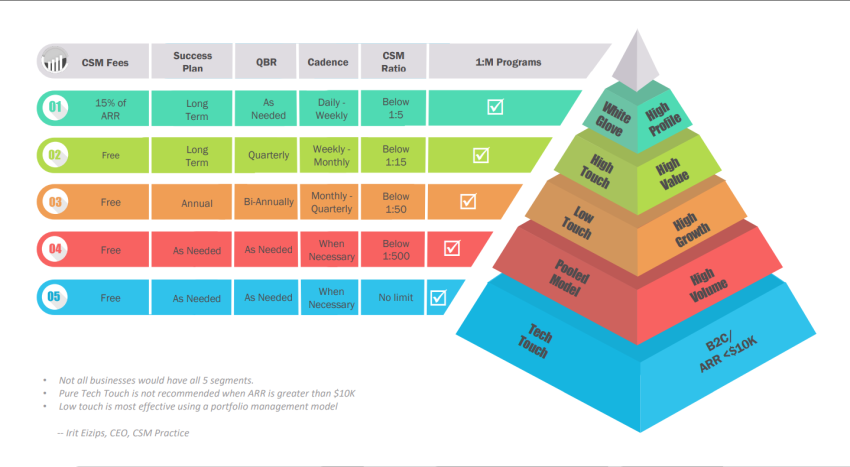
In this model, more experienced managers are assigned to a smaller number of high-tier clients. As you move down the tiers, the CSM-to-customer ratio increases. Senior managers work closely with top-tier clients to ensure they get the best out of your platform.
Since managers handling lower-tier clients often manage a higher volume of accounts, providing them with the right automation tools enables them to scale efficiently while still delivering personalized experiences.
Create Specialised Roles
Another tweak you can make to your organizational structure to scale customer success is creating specialised roles. Identify responsibilities that take the manager’s time away from customer relationship-building activities and carve out new roles for them to focus on. Many leading SaaS businesses have successfully scaled their operations while maintaining revenue by creating specialised roles, such as Onboarding Specialists, Renewal Processing Managers, and Upgrade Managers.
Pro Tip: Be mindful of the tasks you delegate to specialised roles to avoid customer confusion and other counterproductive outcomes. Try to keep all customer-facing activities in the hands of familiar Customer Success Managers (CSMs) to maintain established connections and relationships.
Formalizing Renewals
Many growing SaaS companies treat renewals as an afterthought, pushing them aside till the last minute. When renewal dates eventually sneak up on ill-prepared teams, potential renewals turn to missed revenue, ultimately damaging revenue rates. Formalize renewal to secure predictable revenue by:
- Structuring documentation, like RACI charts, to provide clear guidelines for team members
- Standardizing communications with email templates
- CRM software for automating payments and tracking progress, like Salesforce and HubSpot
- Tailoring incentives to encourage longer contracts
Automating with Customer Success AI Agents
AI is an invaluable addition to your tech stack. In fact, eighty-four percent of companies that have integrated AI into their customer experience (CX) processes report valuable outcomes. Many SaaS organizations leverage AI’s ability to identify patterns to analyze customer data on a large scale and configure these agents to automatically trigger hyper-targeted interactions, thereby deepening customer connections and fostering brand loyalty.
Utilizing AI to automate mundane tasks frees up CSM managers, allowing them to concentrate on developing strategic approaches for fostering meaningful customer relationships. With AI agents, you can automate customer interactions like feedback surveys, upselling, or cross-selling opportunities, onboarding, and check-ins.
Eyeing Cross-functional Metrics
To properly weigh the results of your customer success strategy, you have to look at its impact on the grand scheme of things. Instead of tracking customer success specific metrics, expand your scope to observe its influence on other teams and overall business outcomes. This involves monitoring key indicators, such as Net Retention Rate (NRR), expansion revenue, NPS/CAT scores, and time-to-value.
Customer Success Best Practices
Successful companies share similar approaches to keeping customers happy and loyal. Let’s break down what they do and the best practices you can follow.
- Put customers at the heart of everything. From hiring employees to making products, the focus is on delivering amazing customer experiences and delivering professional services.
- Always look ahead. Instead of just reacting to problems, they try to predict them. This means using data to spot potential issues and offering solutions before customers even realize they need them.
- Use data to make smart decisions. Numbers don’t lie. Successful companies track how customers feel, what they buy, and when they leave. This information helps them figure out what’s working and what’s not.
- Use technology to help. Customer service tools make customer management easier, automate tasks, analyze data, and give a clear picture of how customers are doing.
- Never stop improving. The best companies always look for ways to do things better. They ask for customer feedback, try new ideas, and learn from their mistakes.
Implementing a customer success program isn’t without its challenges. Pain points like limited budgets and staff, reluctance to engage with customer success, and data quality issues can frequently crop up. However, with the right strategies, you can easily overcome these hurdles.
The Future of Customer Success Is Automated

Customer success is growing rapidly, with automation and advanced customer service tools reshaping business-customer interactions. Here’s how:
- Proactive issue resolution: AI-powered contact center tools can analyze customer data to predict potential problems before they escalate, allowing for timely interventions and enhanced customer satisfaction.
- Personalized customer experiences: Automation enables hyper-targeted customer segmentation and tailored interactions, fostering deeper connections and customer loyalty.
- Efficient task management: Routine tasks like data entry, reporting, and scheduling can be automated, freeing up customer success managers to focus on strategic initiatives and high-value interactions.
- Data-driven insights: Automation can process vast amounts of customer data to get actionable insights, driving informed decision-making and continuous improvement.
- Scalability: Automated processes can handle increased customer volumes without compromising service quality, ensuring business growth is supported by efficient customer success operations.
While automation offers significant benefits, human expertise remains crucial. The future of customer success lies in balancing technology with the human touch, creating efficient yet personalized experiences that foster long-term customer loyalty.
Nextiva: Making Customer Success Count
Executing your customer success strategy begins with the right tools. Give every team member access to real-time account intelligence. A unified customer support platform like Nextiva can make this dream a reality, offering in-app customer success software, from a single unified platform.
Coach your support team on driving these numbers with the right behaviors. Shortcuts and gimmicks don’t scale. Stay attuned to customer needs, especially as the industry moves around you. With the right customer success process, you’ll build a more sustainable, profitable business.
See how Rack Attack upped their customer success process with Nextiva as their business phone system, supporting 40+ locations in North America.

Relationships start with a conversation.
Nextiva helps you seamlessly manage of voice, video, and messaging with customers on a unified platform.

















 Customer Experience
Customer Experience 














